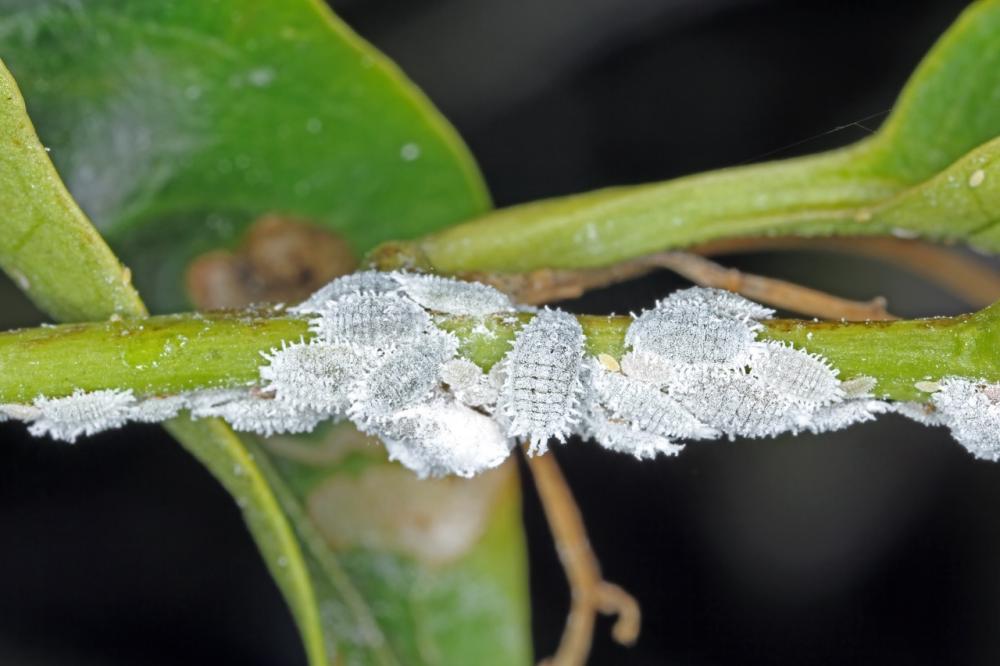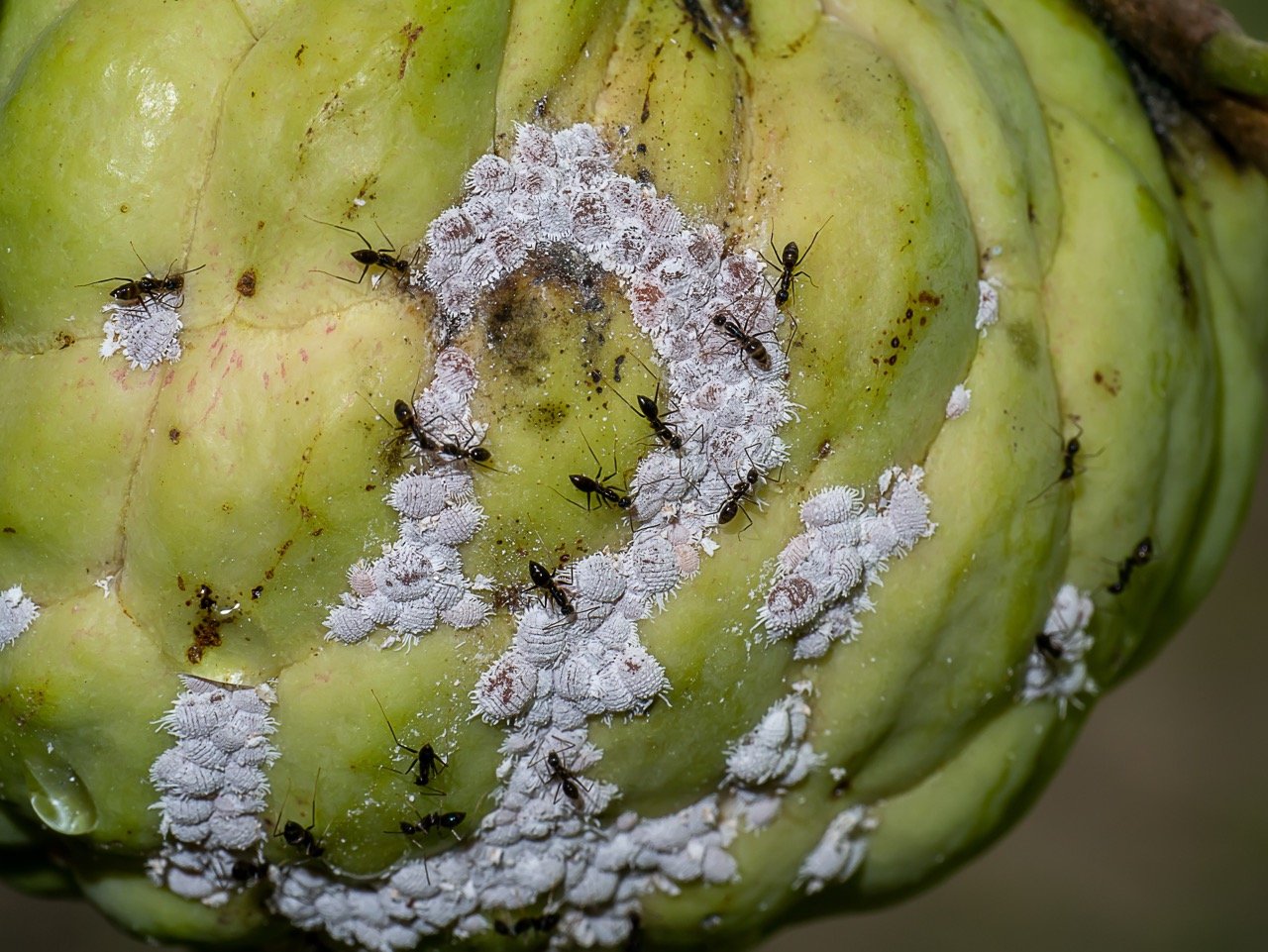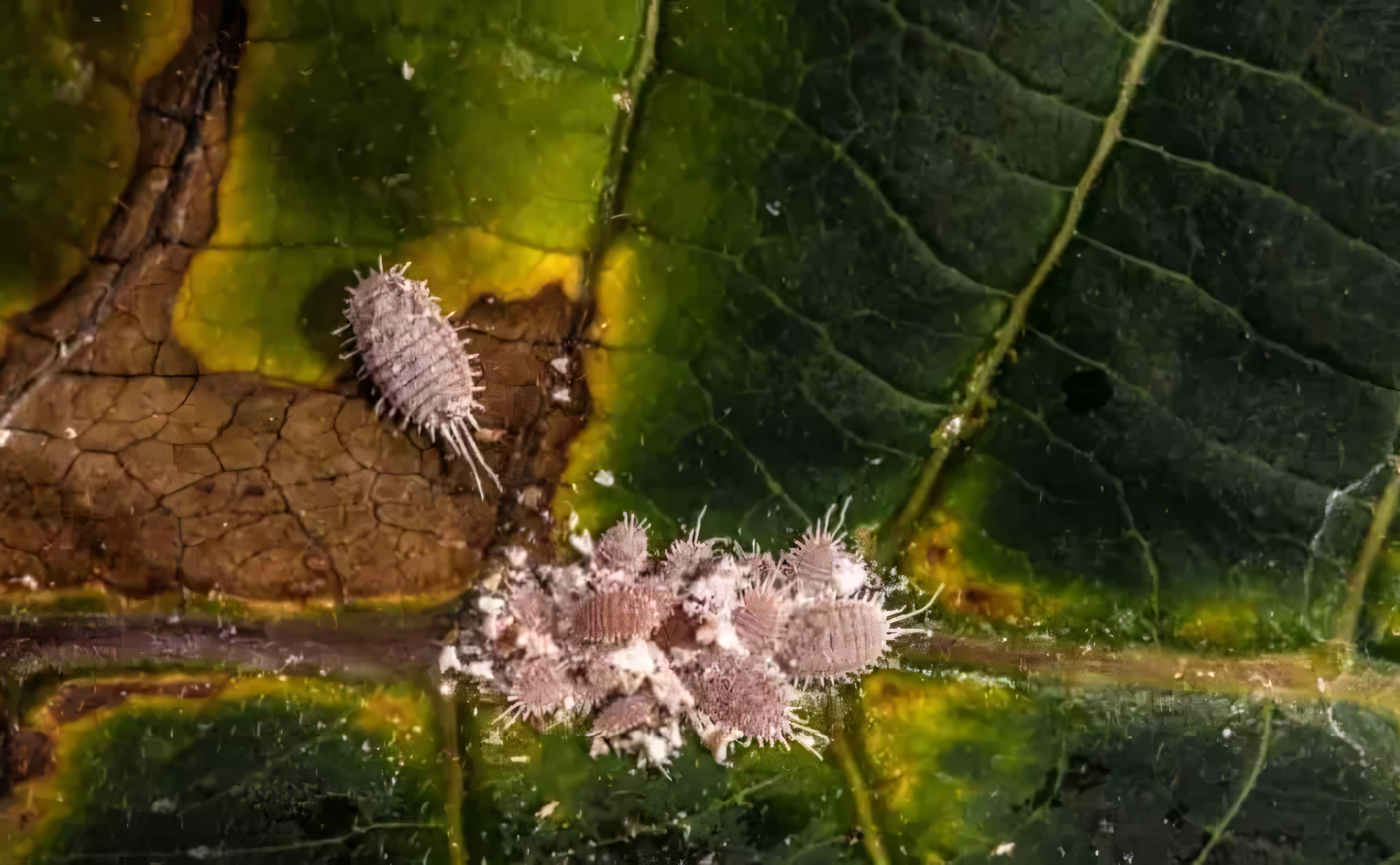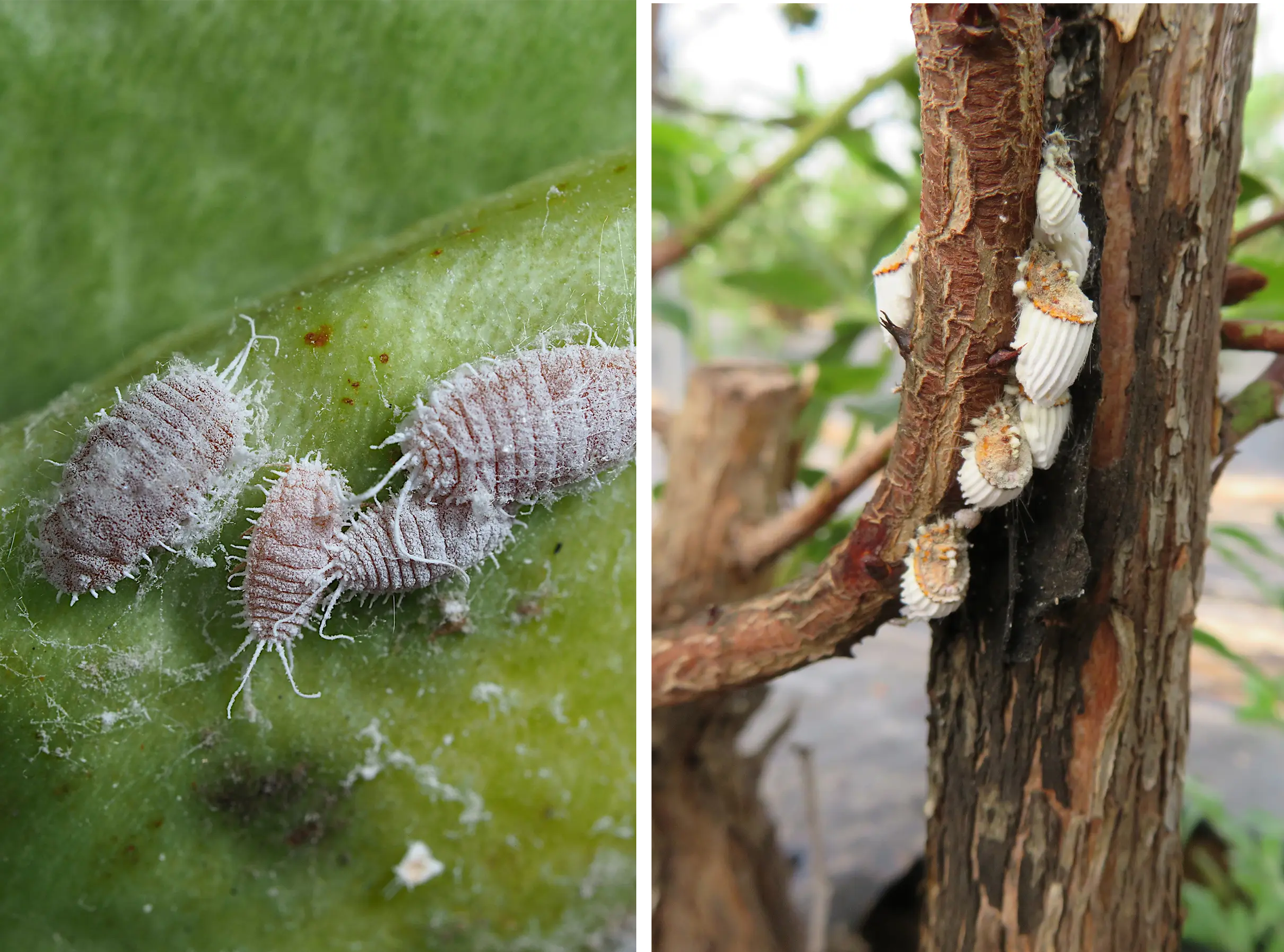
- Mealybugs are one of the most serious pests affecting field crops, fruit trees, and greenhouses. Their bodies are characterized by a white, waxy coating that gives them a cottony appearance. They often live in dense clusters on stems, leaves, or even fruits.
- It feeds by sucking plant sap, leading to general plant weakness. It also secretes a honeydew that encourages the growth of black mold and attracts large numbers of ants, which in turn protect the bug colonies in exchange for feeding on these secretions. Its rapid reproduction and difficulty in reaching it with pesticides make it one of the most difficult pests to control.

Symptoms of infection
- Yellowing of leaves and poor vegetative growth.
- 🍂 Leaf curling and distortion with loss of vitality.
- 🍯 The appearance of honeydew covering the leaves and fruits with black mold.
- 🐜 The spread of large numbers of ants around infected plants.
- 🪱 White, cottony growths on leaves, stems, and fruits.
- 🌾 The most affected crops
- 🍊 Citrus fruits (orange - lemon - mandarin).
- 🍇 Grapes.
- 🌴 Palm trees (especially seedlings).
- 🥒 Greenhouse vegetables such as cucumbers and tomatoes.
- 🌺 Ornamental plants and flowers.
Mealybug life cycle
- Eggs: Laid inside white waxy masses on stems and leaves.
- Nymphs: Small, yellow, motile, they immediately begin sucking sap.
- Adult insect: 3–5 mm long, white, waxy, and lives in colonies.
- ⏳ The complete cycle takes about 30–40 days , and the insect produces several generations during the year, increasing the chances of recurrent infestation.

economic damage
- Plant weakness and reduced productivity.
- Fruit deformity and difficulty in marketing.
- Increased spread of black mold.
- Additional losses due to ant activity and difficulty of control.
Preventive measures
- ✂️ Regular pruning of infected parts and burning them.
- 🧪 Sterilize agricultural tools before moving them from one field to another.
- 🌱 Pay attention to agricultural cleanliness and get rid of surrounding weeds.
- 💧 Balance irrigation and fertilization and avoid excessive nitrogen fertilization.
- 🐞 Encourage natural enemies such as ladybird beetles that feed on bugs.

Active ingredients to combat mealybugs
- Imidacloprid: 0.25–0.5 ml per 1 liter of water – repeat every 14 days.
- Thiamethoxam: 0.3–0.6 ml per 1 liter of water – repeat every 14 days.
- Acetamiprid: 0.3–0.5 ml per 1 liter of water – repeated every 14 days.
- Spirotetramat: 0.5–0.75 ml per 1 liter of water – a modern and very effective substance against mealybugs.
Practical tips for farmers
- 🔎 Check plants regularly, especially hidden places like leaf bases and fruits.
- 🎯 Focus on spraying on areas where cotton clusters occur, as they are the source of infection.
- 🔄 Alternate active ingredients to avoid the development of resistance.
- ⚖️ Combine agricultural, biological and chemical control to achieve the best results.

